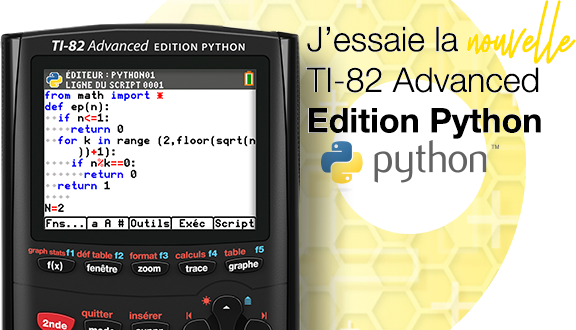modul 2 modul 3 DBMS
DownloadTélécharger
Actions
Vote :
ScreenshotAperçu

Informations
Catégorie :Category: nCreator TI-Nspire
Auteur Author: SPITZER2001
Type : Classeur 3.0.1
Page(s) : 1
Taille Size: 2.32 Ko KB
Mis en ligne Uploaded: 20/11/2024 - 17:28:15
Uploadeur Uploader: SPITZER2001 (Profil)
Téléchargements Downloads: 9
Visibilité Visibility: Archive publique
Shortlink : https://tipla.net/a4329858
Type : Classeur 3.0.1
Page(s) : 1
Taille Size: 2.32 Ko KB
Mis en ligne Uploaded: 20/11/2024 - 17:28:15
Uploadeur Uploader: SPITZER2001 (Profil)
Téléchargements Downloads: 9
Visibilité Visibility: Archive publique
Shortlink : https://tipla.net/a4329858
Description
Fichier Nspire généré sur TI-Planet.org.
Compatible OS 3.0 et ultérieurs.
<<
Module 2: Data Models and ER Diagrams Data Models Conceptual Model: Provides a high-level view of thedatabase, focusing on entities, attributes, and relationships. It isindependent of implementation details. Logical Model: Adds technical details like keys andrelationships while remaining independent of specific DBMS implementations. Physical Model: Defines how the data is stored physically inthe database, including data types, indexes, and storage details. Entity-Relationship (ER) Diagrams Entities: Represent objects or concepts, such as a Customeror Product. Attributes: Describe properties of entities, such asCustomer Name or Order Date. Relationships: Show how entities are connected, such as aCustomer placing an Order. Advanced Concepts in ER Diagrams Weak Entities: Entities that cannot exist independently andrely on a strong entity, such as an Order Item depending on an Order. Recursive Relationships: When an entity is related to itself,such as an Employee supervising another Employee. Associative Entities: Used to resolve many-to-manyrelationships by introducing a linking table. Participation and Cardinality Total Participation: All instances of an entity are involvedin a relationship. Partial Participation: Only some instances of an entityparticipate in a relationship. Cardinality: Specifies the number of instances of one entitythat can be associated with another, such as One-to-One, One-to-Many, orMany-to-Many relationships. Module 3: SQL Basics Core SQL Commands SELECT: Retrieves specific data from one or more tables. INSERT: Adds new data into a table. UPDATE: Modifies existing data in a table. DELETE: Removes specific data from a table. SQL Clauses and Keywords WHERE: Filters rows based on specific conditions. GROUP BY: Aggregates data based on specified columns, oftenused with aggregate functions. ORDER BY: Sorts query results in ascending or descendingorder. HAVING: Filters aggregated data after grouping. Indexes Indexes are database objects that speed up data retrievalbut can increase storage requirements and slow down write operations. They areessential for optimizing queries. Made with nCreator - tiplanet.org
>>
Compatible OS 3.0 et ultérieurs.
<<
Module 2: Data Models and ER Diagrams Data Models Conceptual Model: Provides a high-level view of thedatabase, focusing on entities, attributes, and relationships. It isindependent of implementation details. Logical Model: Adds technical details like keys andrelationships while remaining independent of specific DBMS implementations. Physical Model: Defines how the data is stored physically inthe database, including data types, indexes, and storage details. Entity-Relationship (ER) Diagrams Entities: Represent objects or concepts, such as a Customeror Product. Attributes: Describe properties of entities, such asCustomer Name or Order Date. Relationships: Show how entities are connected, such as aCustomer placing an Order. Advanced Concepts in ER Diagrams Weak Entities: Entities that cannot exist independently andrely on a strong entity, such as an Order Item depending on an Order. Recursive Relationships: When an entity is related to itself,such as an Employee supervising another Employee. Associative Entities: Used to resolve many-to-manyrelationships by introducing a linking table. Participation and Cardinality Total Participation: All instances of an entity are involvedin a relationship. Partial Participation: Only some instances of an entityparticipate in a relationship. Cardinality: Specifies the number of instances of one entitythat can be associated with another, such as One-to-One, One-to-Many, orMany-to-Many relationships. Module 3: SQL Basics Core SQL Commands SELECT: Retrieves specific data from one or more tables. INSERT: Adds new data into a table. UPDATE: Modifies existing data in a table. DELETE: Removes specific data from a table. SQL Clauses and Keywords WHERE: Filters rows based on specific conditions. GROUP BY: Aggregates data based on specified columns, oftenused with aggregate functions. ORDER BY: Sorts query results in ascending or descendingorder. HAVING: Filters aggregated data after grouping. Indexes Indexes are database objects that speed up data retrievalbut can increase storage requirements and slow down write operations. They areessential for optimizing queries. Made with nCreator - tiplanet.org
>>












